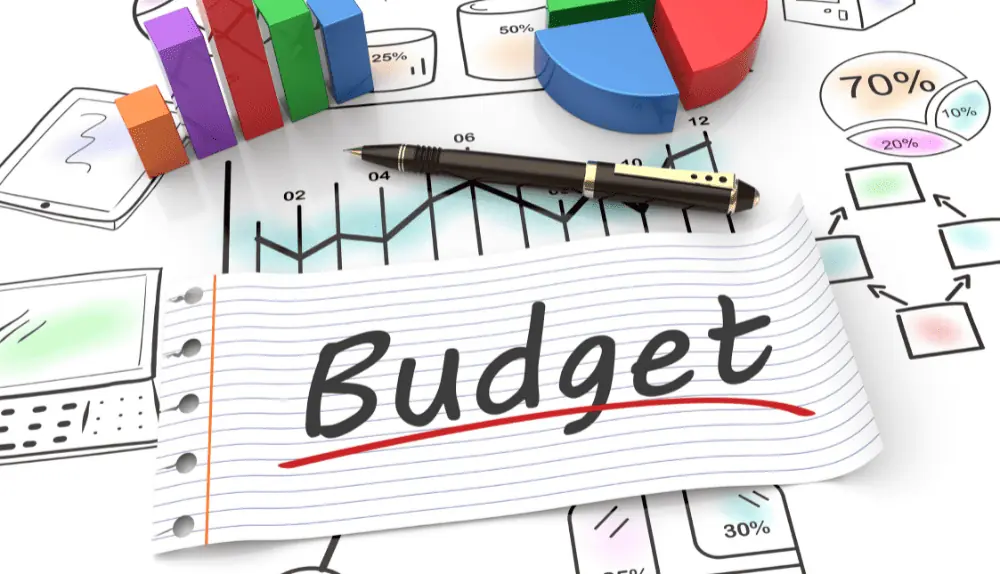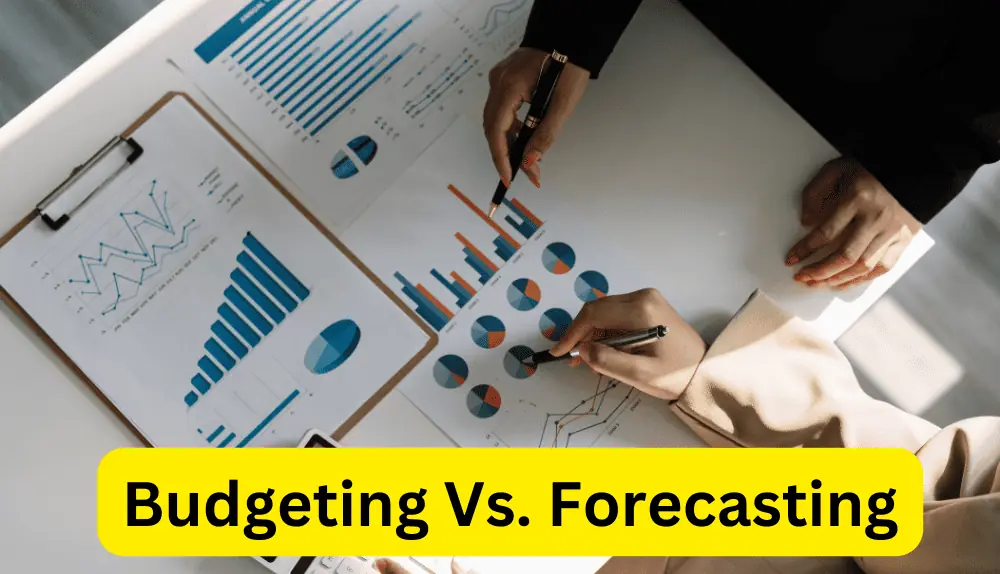Imagine you’re embarking on a journey to navigate the treacherous waters of financial planning, armed with two powerful compasses: budgeting and forecasting. As you set sail, you find yourself pondering the profound question: What is the difference between budgeting and forecasting? These two stalwarts of fiscal decision-making often intertwine, leaving even the savviest of seafarers perplexed. Fear not, for in this illuminating voyage, we shall unfurl the sails of understanding and explore the intricate distinctions between budgeting and forecasting. Prepare to be enlightened as we embark on a captivating exploration of budgeting vs. forecasting tools that hold the key to steering the ship of financial success.
What is Budgeting?
Budgeting is a fundamental financial management tool that empowers individuals, businesses, and organizations to plan, control, and allocate their financial resources effectively. At its core, budgeting involves creating a detailed roadmap that outlines income and expenses over a specific period, usually monthly, quarterly, or annually. It provides a systematic framework to set financial goals, prioritize spending, and make informed decisions based on available resources.

A budget typically includes various components, such as revenue projections, expense categories, savings targets, and debt management. It serves as a blueprint for managing cash flow, ensuring income covers expenses while allowing for savings and investments. By setting realistic budgetary limits, individuals and entities can track their financial progress, identify potential shortfalls or surpluses, and make adjustments as needed.
Budgeting promotes financial discipline, highlights areas of overspending or inefficiency, and aids in making informed choices about resource allocation. It fosters financial stability, enables better decision-making, and ultimately empowers individuals and organizations to achieve their short-term and long-term financial objectives. With budgeting as their guiding compass, individuals and entities can chart a course toward financial success and secure their financial future.
Types of Budget
Budgeting is a versatile financial tool that offers various approaches to suit different needs and objectives. From tracking day-to-day operations to managing long-term investments, budgets come in different forms, each tailored to address specific aspects of financial planning. Understanding the different types of budgets is crucial for individuals and organizations seeking to gain control over their finances and make informed decisions.
Whether it’s forecasting revenue, managing cash flow, or prioritizing capital expenditures, exploring the intricacies of operating budgets, capital budgets, cash flow budgets, master budgets, project budgets, and flexible budgets provides a comprehensive understanding of how budgeting can be customized to fit diverse financial requirements. Let’s delve into each type and unravel the distinctive features and benefits they offer in the realm of financial management.
Operating Budget
An operating budget focuses on the day-to-day operations of a business or organization. It includes revenue and expense projections related to ongoing activities, such as sales, production, marketing, and administrative costs. This budget helps monitor the financial health of the company and guides decision-making for optimal operational efficiency.
Capital Budget
A capital budget is designed to plan and control investments in long-term assets. It focuses on major expenditures like infrastructure, equipment, facilities, or technology upgrades. This budget considers the costs, benefits, and return on investment associated with capital projects, aiding in informed decision-making and prioritizing long-term investments.
Cash Flow Budget
A cash flow budget tracks the inflows and outflows of cash over a specific period. It provides insights into the timing of cash receipts and disbursements, helping individuals and businesses manage their liquidity effectively. By identifying potential cash shortfalls or surpluses, this budget aids in managing working capital, loan repayments, and overall cash flow stability.
Master Budget
A master budget is a comprehensive financial plan that combines all other budgets, including operating, capital, and cash flow budgets. It provides an overall view of the organization’s financial performance, integrating various components into a cohesive framework. The master budget considers the interrelationships between different budget categories, facilitating strategic decision-making and resource allocation.
Project Budget
A project budget is specifically tailored for a particular project or initiative. It outlines the estimated costs and resources required to accomplish project objectives within a defined timeframe. This budget helps project managers monitor expenses, track progress, and ensure that resources are utilized efficiently to deliver successful outcomes.
Flexible Budget
A flexible budget allows for adjustments based on varying levels of activity or changing circumstances. It incorporates different cost and revenue scenarios, enabling comparisons between actual performance and budgeted targets. This type of budget provides a dynamic tool for managing uncertainties and adapting to evolving business conditions.
Each type of budget serves a specific purpose and provides valuable insights into different aspects of financial planning and management. By employing the appropriate budgeting approach, individuals and organizations can effectively plan, control, and optimize their financial resources.
How to Prepare Budget for Small Business?
Preparing a budget for a small business is a crucial step towards effective financial management and ensuring the success and sustainability of the enterprise. Here are some steps to help you prepare a budget for your small business:
Set Clear Goals
Define your financial goals and objectives for the upcoming period. Determine what you want to achieve, whether it’s increasing sales, reducing costs, or expanding the business. Your goals will guide your budgeting process.
Identify Revenue Sources
Identify all potential sources of revenue for your business, such as sales, services, or other income streams. Analyze historical data and market trends to estimate realistic revenue projections.
Track Expenses
Review and categorize your expenses, including fixed costs (rent, utilities, salaries) and variable costs (raw materials, marketing, supplies). Consider both ongoing expenses and any upcoming or planned expenditures.
Create a Sales Forecast
Develop a sales forecast based on market research, historical data, and anticipated growth. Estimate the volume and value of sales, considering factors like customer demand, pricing strategies, and market competition.
Budget for Operational Costs
Allocate funds for day-to-day operational expenses. This includes costs such as inventory, employee wages, marketing, utilities, insurance, and maintenance. Ensure that your budget adequately covers all necessary expenses to keep your business running smoothly.
Factor in Capital Expenditures
Consider any planned investments in assets, equipment, or technology that will support your business growth or enhance productivity. Budget for these capital expenditures accordingly, factoring in the cost of acquisition, installation, and maintenance.
Account for Taxes and Contingencies
Include provisions for taxes, licenses, permits, and other regulatory compliance costs. Additionally, set aside some funds for unexpected expenses or emergencies that may arise during the budget period.
Monitor and Review
Regularly monitor your budget against actual income and expenses. Compare the budgeted figures with the actual performance and make adjustments as needed. This will help you stay on track, identify any deviations, and take corrective actions promptly.
Remember, budgeting is an iterative process. As your business evolves, review and revise your budget regularly to reflect changes in market conditions, business strategies, and financial goals. By diligently preparing and managing your budget, you can gain better control over your finances, make informed decisions, and maximize the financial health and growth of your small business.
What is Forecasting?
Forecasting is a systematic process of predicting future events or outcomes based on historical data, trends, and relevant information. It involves analyzing past patterns and extrapolating them to make informed projections about what may happen in the future. Forecasting plays a crucial role in decision-making across various fields, including economics, finance, business, weather, and demographics.

In business, forecasting helps organizations anticipate and plan for future demand, sales, expenses, and market trends. It enables them to estimate potential outcomes, identify opportunities, and mitigate risks. By analyzing historical data, market research, industry trends, and other relevant factors, businesses can make more accurate predictions about future sales, revenue, and costs. This information guides strategic planning, resource allocation, production schedules, inventory management, and financial decision-making.
Forecasting methods can range from simple techniques, such as time series analysis and trend extrapolation, to more advanced statistical models and data-driven approaches like regression analysis, moving averages, and exponential smoothing. The choice of forecasting method depends on the nature of the data, the level of accuracy desired, and the specific requirements of the forecasting task.
Effective forecasting provides businesses with valuable insights and enables them to make proactive decisions to adapt to changing market conditions, optimize operations, allocate resources efficiently, and stay ahead of the competition. It helps organizations navigate uncertainties and plan for a successful future based on well-informed expectations.
Types of Forecasting
There are several types of forecasting methods, each suited to different situations and data characteristics. Here are some common types of forecasting:
Time Series Forecasting
Time series forecasting involves analyzing historical data over time to predict future values. This method assumes that future patterns and trends will resemble those observed in the past. Techniques such as moving averages, exponential smoothing, and autoregressive integrated moving average (ARIMA) models are commonly used in time series forecasting.
Quantitative Forecasting
Quantitative forecasting relies on numerical data and statistical models to make predictions. It involves analyzing historical data and using mathematical techniques to identify patterns, correlations, and relationships. Methods such as regression analysis, neural networks, and machine learning algorithms fall under quantitative forecasting.
Qualitative Forecasting
Qualitative forecasting relies on expert opinions, market research, surveys, and subjective judgment to make predictions. This method is used when historical data is limited, or unreliable, or when forecasting new products or emerging markets. Techniques like the Delphi method, market research surveys, and expert panels are commonly employed in qualitative forecasting.
Demand Forecasting
Demand forecasting focuses on predicting future customer demand for products or services. It helps businesses plan production, manage inventory levels, optimize pricing strategies, and meet customer expectations. Demand forecasting methods can include time series analysis, market research, customer surveys, and trend analysis.
Sales Forecasting
Sales forecasting is a specific type of demand forecasting that focuses on predicting future sales volumes and revenues. It helps businesses estimate future sales levels, set sales targets, allocate resources and plan marketing and sales strategies. Sales forecasting methods can involve historical sales data analysis, market research, sales pipeline analysis, and customer segmentation.
Financial Forecasting
Financial forecasting involves predicting future financial outcomes, such as revenue, expenses, cash flow, and profitability. It helps businesses plan their budgets, financial strategies, and investment decisions. Financial forecasting methods can include historical financial data analysis, trend analysis, ratio analysis, and scenario planning.
It’s important to select the most appropriate forecasting method based on the available data, the nature of the forecasted variable, the level of accuracy desired, and the specific requirements of the forecasting task. Often, a combination of forecasting techniques may be employed to obtain more accurate and reliable predictions.
How to Prepare a Forecast for Small Business?
Preparing a forecast for a small business involves analyzing historical data, market trends, and relevant factors to project future performance. Here are the steps to help you prepare a forecast for your small business:
Define the Forecast Period
Determine the timeframe for your forecast. It can be monthly, quarterly, or annually, depending on the nature of your business and the level of detail you require.
Gather Historical Data
Collect and organize historical data related to your business’s key performance indicators (KPIs). This may include sales figures, revenue, expenses, customer data, website analytics, or any other relevant metrics. The more accurate and comprehensive your historical data, the better the basis for your forecast.
Identify Key Drivers
Identify the factors that influence your business’s performance. These can include market trends, industry outlook, customer behavior, competition, and economic indicators. Analyze how these drivers have impacted your historical data to understand their potential influence on future performance.
Determine Forecasting Methods
Choose appropriate forecasting methods based on your business’s data characteristics and requirements. For example, if you have time series data, you may consider using time series forecasting methods such as moving averages or exponential smoothing. If you have limited historical data or are dealing with new products/markets, qualitative methods like expert opinions or market research may be more suitable.
Develop Revenue Forecasts
Project your future revenue by considering factors such as market growth rates, customer demand, pricing strategies, sales pipeline, and new product introductions. Use historical data, market research, and customer insights to estimate future sales volumes and revenues.
Estimate Expenses
Estimate your future expenses by analyzing historical trends and considering factors like inflation, cost of goods sold (COGS), operating expenses, and planned investments. Break down your expenses into categories like personnel, marketing, rent, utilities, and inventory costs.
Cash Flow Forecast
Your projected revenue and expenses can be combined to create a cash flow forecast. Take into account when cash is coming in and going out, including the date of loan payments, accounts payable, receivables, and other financial commitments. This will enable you to foresee potential cash surpluses or shortfalls.
Monitor and Review
Continuously monitor your actual performance against the forecasted figures. Regularly review and adjust your forecast as new information becomes available or when actual results differ significantly from the projections. This will allow you to make necessary adjustments and refine your forecasting process.
Remember that forecasting is an ongoing process, and accuracy improves over time as you gather more data and gain insights into your business’s performance. Regularly update and refine your forecast based on market changes, business strategies, and new information to make informed decisions and plan for the future effectively.
Budgeting Vs. Forecasting – Major Differences
Although both budgeting and forecasting are crucial financial planning tools, they have diverse uses and focus on various areas of the process. The following are the main differences between forecasting and budgeting:
Purpose
- Budgeting: The primary purpose of budgeting is to set financial goals, allocate resources, and establish a roadmap for achieving those goals. It involves creating a detailed plan for income and expenses, providing a framework for financial control and decision-making.
- Forecasting: The main purpose of forecasting is to predict future outcomes and trends based on historical data, market analysis, and other relevant factors. It helps in anticipating potential scenarios, identifying opportunities, and mitigating risks.
Time Horizon
- Budgeting: Budgeting typically covers a specific period, such as a month, quarter, or year. It focuses on short-term financial planning and provides a detailed plan for managing income and expenses within that defined period.
- Forecasting: Forecasting can cover a shorter or longer time horizon depending on the purpose. It can be short-term, mid-term, or long-term. Forecasting looks beyond the budgeting period and aims to estimate future trends and performance over a more extended period.
Level of Detail
- Budgeting: Budgets are usually highly detailed and granular. They involve specific line items for revenues, expenses, and other financial categories. Budgets break down the financial plan into specific amounts allocated to different cost centers or departments.
- Forecasting: Forecasts can be less detailed compared to budgets. They provide a more high-level overview of expected outcomes, trends, and overall financial performance. Forecasts focus on the big picture and aim to capture broader trends and patterns.
Flexibility
- Budgeting: Budgets are often more rigid and less flexible. They set specific targets and limits for expenses and revenues within the budgeting period. Deviations from the budget may require approval or significant adjustments to the plan.
- Forecasting: Forecasts are more flexible and allow for adjustments and revisions as new information becomes available or circumstances change. Forecasts are based on assumptions and can be modified to reflect the evolving business environment.
Usage
- Budgeting: Budgets are used for day-to-day financial management, monitoring actual performance against planned targets, and controlling expenses. They serve as a benchmark for evaluating the financial health and progress of a business.
- Forecasting: Forecasts are used for strategic planning, decision-making, and anticipating future trends. They help businesses identify potential opportunities, risks, and the need for adjustments to their plans and strategies.
While budgeting and forecasting are different tools, they complement each other. Budgeting provides the framework for managing day-to-day operations, while forecasting assists in long-term planning and helps businesses navigate uncertainties and prepare for future challenges and opportunities.
Final Words
In conclusion, budgeting and forecasting are both indispensable tools for effective financial planning and decision-making. Budgeting focuses on setting financial goals, allocating resources, and establishing a detailed plan for managing income and expenses within a specific period. On the other hand, forecasting aims to predict future outcomes and trends based on historical data, market analysis, and other relevant factors. It helps businesses anticipate potential scenarios, identify opportunities, and mitigate risks.
While budgeting provides a structured framework for day-to-day financial management and control, forecasting assists in strategic planning and anticipating future trends. Both budgeting and forecasting play complementary roles in ensuring the financial health and success of a business. By combining the insights gained from budgeting and forecasting, businesses can make informed decisions, adapt to changing circumstances, and navigate their way to sustainable growth and profitability.
Frequently Asked Questions (FAQs)
How often should I update my budget and forecast?
Budgets are typically updated on an annual or quarterly basis, while forecasts can be updated more frequently, depending on the business needs and the availability of new information.
What are the key benefits of budgeting?
Budgeting helps businesses set financial goals, allocate resources efficiently, monitor performance, control expenses, make informed decisions, and achieve long-term financial stability and growth.
Can I use forecasting to predict the exact future financial performance of my business?
No, forecasting cannot predict future outcomes with absolute certainty. It provides estimations and projections based on historical data and assumptions. Actual results may differ due to unforeseen circumstances or changes in market conditions.
What should I do if my actual performance deviates significantly from my budget or forecast?
If there are significant deviations, it is important to analyze the reasons behind the discrepancies and take appropriate actions. This can include adjusting expenses, revising revenue projections, reassessing strategies, or seeking opportunities to optimize operations and performance.
Are there any software tools available to assist with budgeting and forecasting?
Yes, there are various software tools and financial management platforms available that can streamline the budgeting and forecasting process, automate calculations, provide visualizations, and facilitate collaboration among team members.

